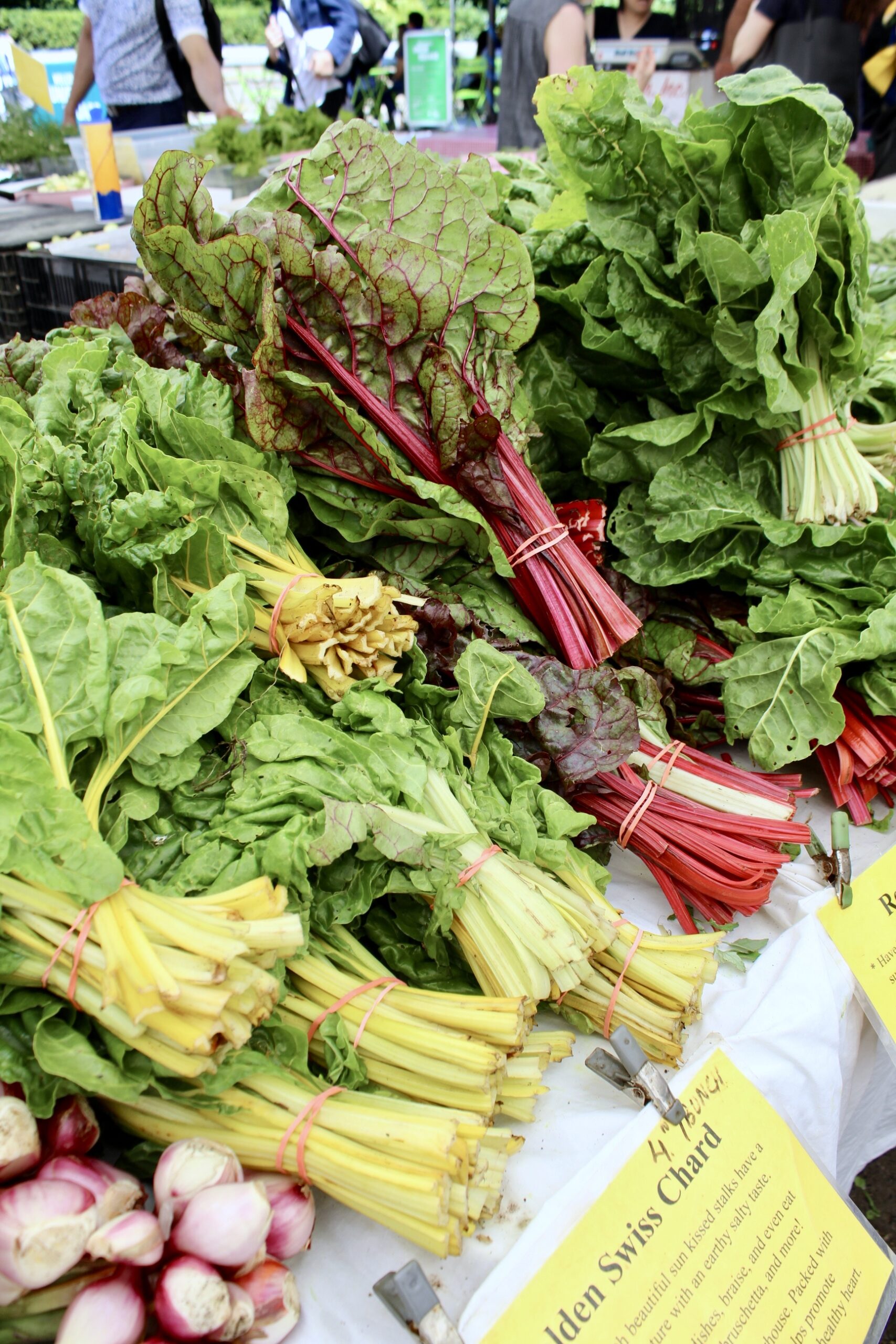Leafy Greens Series: Swiss Chard
July 18, 2019
Everybody knows that you have to get your greens in every day, right? But why is that, exactly? What do greens have in them that make them such “superfoods” and such “nutrient powerhouses”?
Instead of taking everyone’s word for it, it’s about time to learn for yourself exactly what nutrients they contain and why they’re important.
Here’s the bottom line: Eating a diet that’s rich in leafy greens has numerous healthy benefits, including a reduced risk of heart disease, high blood pressure, inflammation, and even some types of cancers.
That’s why we created this blog series to highlight some of the coolest and healthiest leafy greens to highlight their benefits so that we can all learn a little bit more about how our body is affected when we eat them. Join us as we educate ourselves!
Important note: The information in this blog series is not exhaustive. Not all the foods’ nutrients and health benefits are listed here, but rather just those most prominent and distinctive; the highlights of their nutritional properties. We are not nutritionists and don’t pretend to be. All information sources are listed at the bottom of the article.
Swiss Chard
Despite its name, Swiss chard does not originate from Switzerland, but actually from the Mediterranean. It comes in a few different varieties which include vibrant green, yellow, and reddish-pink stalks. Some of the colored varieties are so vibrant you wouldn’t believe they were even real! You might find the green variety named “Swiss” chard, and the other colors named “rainbow” chard. For the purpose of simplicity, in this article we’ll be referring to all varieties of the plant as Swiss chard.
Due to its low calories and high amount of nutrients, Swiss chard is considered a nutrient-dense food.

Eye Health
Swiss chard is loaded with antioxidants that help fight disease and free radical damage. It contains polyphenols, Vitamins C and E, and carotenoid plant pigments such as beta carotene, lutein, and zeaxanthin. These carotenoids are crucial for eye health and have been shown to prevent eye damage and cataracts.
Diabetes Prevention and Treatment
Swiss chard is especially useful for preventing and treating diabetes. It’s high in fiber, helping slow digestion, which in turn reduces the rate at which sugar is absorbed into the bloodstream, preventing high blood pressure and stabilizing glucose levels. It may therefore decrease insulin resistance and lower blood sugar. Blood pressure levels are also managed by the minerals calcium, magnesium, potassium and copper that Swiss chard also contains.
Magnesium
100g of Swiss chard provides 20% of the recommended daily amount of magnesium, which is important for blood circulation and reducing muscle cramps. Magnesium deficiency has been linked to depression, infertility, insomnia, and noise sensitivity, as well as neuromuscular dysfunction. In conjunction with potassium and calcium, the magnesium in Swiss chard helps maintain healthy blood pressure.
Dietary Nitrate
In addition, Swiss chard contains dietary nitrate, which has been shown to improve muscle oxygenation during exercise. This suggests that a regular intake of dietary nitrate may enhance exercise tolerance during long-term endurance exercise.
Iron
Every 100g of Swiss chard contains 10% of the recommended daily amount of iron, which is critical in preventing and treating anemia. Iron, as we learnt from collard greens, is also crucial for transporting oxygen from your lungs the the rest of your body. Without iron, the body is unable to make enough oxygen-carrying red blood cells.
Vitamin K
Swiss chard, like most leafy greens, is an excellent source of Vitamin K, which prevents the risk of developing osteoporosis due to its bone-healthy properties.
Betalains
Swiss chard is also one of the best sources of betalains, which are water-soluble pigments with a lot of great properties making them antioxidant, anti-inflammatory, and anti-cancer. In addition, vegetables that are high in betalain levels like Swiss chard have been shown to provide protection from oxidative stress-related disorders and neurogenerative diseases such as Alzheimer’s and Parkinson’s diseases.
How to Use Swiss Chard
So how to cook this fabulous green?
Swiss chard leaves and stems have a mild, herby taste that go well with almost everything. They pair especially well with sauces – try eating Swiss chard with a béchamel, tomato, or wine reduction sauce. Yum!
The leaves are fantastic charred on the grill. You can even deep fry the leaves like chips or, alternatively, dehydrate them in the oven and sprinkle with extra virgin olive oil and salt for a great snack. Try chopping and hot pickling the stems in a mixture of vinegar, sugar, and dried herbs to add some great tanginess to any dish. Like collard greens, you can blanch the leaves and use them as wraps, although Swiss chard leaves are thinner and more delicate than the collards, so they’ll be more manageable. Roasted tomatoes wrapped in Swiss chard would make great crudités for a dinner party, for example.
Let us know your favorite way to cook Swiss chard in the comments below. Enjoy!
Sources: healthline.com, medicalnewstoday.com, draxe.com, naturalfoodseries.com
be the first to comment